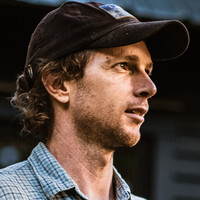I would like to thank everyone for their 2012 SS comments! We are taking all of these LEEDuser comments into consideration, and will use them to help guide the next phase of this process.
LEED 2012 – 2nd Public Comment – Sustainable Sites (SS) Section
Key changes in the the Sustainable Sites (SS) section of LEED-NC (part of LEED BD&C) in the second public comment draft of LEED 2012 are discussed below.
August 1, 2011
Do you have comments or questions on this draft? Discuss them below with your fellow LEED professionals. Substantive comments posted here during USGBC's second public comment period will be submitted to USGBC and considered "official" public comments.
More information on LEED 2012 certification and the second public comment
Some Sustainable Sites (SS) credits have been moved to the new Location and Transportation (LT) category, but much still remains, and there are some big changes.
Major Changes
There is a brand-new credit in this second draft: Site Assessment (1 point). The credit requires a “site survey/assessment” taking into consideration topography, hydrology, climate, vegetation, soils, and human uses. The credit appears to be a nudge toward integrated design, requiring a narrative on how each topic influenced the project design. This same assessment is required for the IP “Discovery” credit (see above), so this type of assessment essentially gets extra weight in this draft.
Brownfield Redevelopment is now Brownfield Remediation (2 points—an increase from LEED 2009), and projects would still not only develop a contaminated site, they would also have to clean it up. Perhaps with the aim of making this credit more achievable, the requirements have been simplified: remediation has to happen to the satisfaction of a relevant authority, but specific ASTM and EPA standards are no longer referenced.
You rely on LEEDuser. Can we rely on you?
LEEDuser is supported by our premium members, not by advertisers.
Go premium for $... »Heat Island Reduction (1–2 points) remains one credit, not two as in LEED 2009. In this draft, the requirements have broadened. The building façade is now considered part of the relevant surface area, and you would earn credit for these surfaces by using architectural devices or vegetation to shade east and west façades, or low-emissivity (low-e) glazing.
As with the first draft, the overall intent behind the Light Pollution Reduction credit (1 point) doesn’t appear to have been changed, but the requirements have again been overhauled. This draft remains similar in outline to the first draft, but many specific changes to glare and backlight ratings have been made. An option to exceed model lighting ordinance requirements has been eliminated.
Minor Changes
The Construction Activity Pollution Prevention prerequisite remains the same after seeing minor changes for the first draft. The only revision is that the 2008 EPA Construction General Permit is now referenced—not 2003.
For Schools projects, the Environmental Site Assessment prerequisite has a minor but noteworthy change: the blanket exclusion of sites on former landfills has been removed.
Site Development—Protect or Restore Habitat (1–2 points) keeps similar requirements from the first public comment, with a focus on protecting portions of the site from development. The wording of a new soil protection requirement has been clarified. Off-site conservation remains an option, and requirements for that have been made more specific, but not in a very restrictive way.
Since being simplified for the first public comment, Site Development—Open Space (1 point) had only minor wording changes. Projects must provide outdoor space equal to 30% of the total site area, including building footprint—stricter than LEED 2009’s comparable Case 3. A minimum of 25% of the outdoor space must have ground or overhead vegetation.
After rolling the two stormwater credits from LEED 2009 have been rolled into one credit, Rainwater Management (1–2 points) for the first draft, this draft continues by overhauling the wording of the credit. Although they don’t appear to change the requirements drastically, the wording now puts a premium on strategies that “replicate natural site hydrology.”
What do you think of these proposed revisions? Please discuss below. Your comments will considered official public comments by USGBC if received by the public comment deadline.
Comments
LEED 2012 Credit Comments
SS Credit: Site Development— Open Space : I like the changes to this credit, it makes it easier to understand and implement to achieve the credits intent.
SS Credit: Rainwater Management : I like the consolidation of these two credits and increased value for them. I am not sure that the 'Pre-Columbian' change is necessary, just adds to the difficulty of the calculation. How do you determine the amount of old growth forest on your site in 1491? that is a joke, but you see what I mean.
SS Credit: Heat Island Reduction : I like combining these credits into one,
SS Credit: Light Pollution Reduction : I never understood why this credit has to be so complex. The intent is simple. Low wattage outside, reduced/no light leaving the site, point lights down, turn off the inside lights after everyone leaves. Now I know, there are like 15 comments just on this page alone. It is frustrating that you need a Ph.D in lighting to earn a credit that really should be simple.
Jeff, I agree with you about
Jeff,
I agree with you about complexity and wish the credit was simpler. But it’s not easy when you have to define and quantify so that you have something that designers can design to and GBCI reviewers can verify compliance with. How would you suggest that “Low wattage outside”, “reduced/no light leaving the site”, and “point lights down” be defined and quantified? The Heat Island Effect- Roof credit doesn’t say “use light colored roofing”? See what I’m saying?
The credit looks more complicated than it is because it contains two optional paths for uplight control and glare/trespass control.
The draft version of the credit is also going to be much easier than LEED 2009 to show compliance with because the options using BUG ratings require NO computer modeling or calculations.
LEED 2012 Comments
SS Prerequisite: Construction Activity Pollution Prevention:
I would like to see a picture requirement to prove this plan was in place.
SS Credit: Site Assessment : I am assuming that if this is done it will also count for the IP credit. Seems like a good idea, however it is just documentation so I am unsure of the true value of this compared to other points in this section, and considering you are already getting 1/3 of a point for this in the IP section.
SS Credit: Brownfield Remediation: I like that this is now 2 points (3 with the LT point) I realize people are not going to do this just for 2 points, but those projects who do should get more than 1 point.
SS Credit: Site Development—Protect or Restore Habitat: I think the move from 50% restoration to 30% is a good one. I think the definititions for what topsoil cannot be used. The intent is clear, but in practice that will be a nightmare for anyone to figure out. Typically we specify that topsoil be removed, and relocated, so it is good that we can still do that and not worry about the soils 'definied regionally by the USDA Natural Resources Conservation Service Web Soil Survey'.
LEED 2012 Sustainable Sites Rainwater Management
While I appreciate the intent of trying to establish a baseline ecological state of the world prior to the discovery of the Americas, I think the "Pre-Columbian reference is unnecessary and American and Eurocentric. We would achieve the same effect if we referred to "the state of the land when occupied by the "first nations" or first known inhabitants to a particular region." This would work for different regions which have different timelines in terms of human development, from ancient Greece to the aborigines in Australia.
I was under the impression
I was under the impression from Chrissy Macken from USGBC during the first public comment phase that all aspects of LEED were up for comments.
My suggestion to revise the BUG lighting system in the Light Pollution credit was responded to with the comment that the BUG classification system (TM-15) is a referenced standard and cannot be changed.
I am less than satisfied with this Public Comment phase.
If something needs work then
If something needs work then let's fix it now. And if we fix it in SSc8 then we can fix it in EAc1. Who says we are beholden to the MLO or 90.1? Let's be an example and make the MLO play catch-up. Are the TAG members serving the best interest of USGBC or of the IES?
Bill, I agree that LZ
Bill,
I agree that LZ definition is critical and I think that USGBC needs to enusre that these definitions are elaborated and clarified in the Ref Guide and in instructions to GBCI reviewers. There is some mismatch between the 90.1 definitions and the MLO defintions (see MLO user guide on left side pages) and I think that this needs to be looked at for SS8. But I', concerned about not using the 90.1 defintions as a base. It would be very confusing to have two different sets of definitions for LZs in LEED, one in SS and a different one in EA (90.1-2010), wouldn't it?.
Personally I think the T24 definitions are bogus. You can have a city of 100,000 that can have quiet residential areas or park and within it. In fact the old LEEd 2.2 LZ definitions had pop size in the LZ4 definition of + 100,000. I had a reviewer tell me that my university project (clearly LZ3) could be LZ4 because it was in a City of +100K !!
Thanks for bringing this issue of LZ defintions up. It's alwasy been lurking there and probably needs some more work.
I am frustrated because this
I am frustrated because this entire credit is not open for comments. Because we have to align with a brand new, untested system. As a LEED user I'd rather have input as USGBC swears we all do. USGBC should highlight this entire Credit and others during Public Comments saying "No comments accepted" so I and other don't waste our time.
ASHRAE 90.1-2010
LZ2: Areas predominately consisting of residential zoning, neighborhood business districts, light industrial
with limited nighttime use and residential mixed use areas.
LZ3: All other areas.
This is confusing for a definition, and will lead to much frustration. LZ2 could be twisted to mean 90% of locations. At least Title 24 has this based on population data from the US Census. No gray area there. I'd rather have that if you must align with something. LZ4 is also vauge, nothing to stop a local official in a town of 10,000 people from granting written permission that this site is acceptable as LZ4.
Bill, A few comments. (I'm
Bill,
A few comments. (I'm not speaking for the USGBC, but as an Subject Matter Expert who was involved with SS8 development.)
The referenced standard for the credit will be revised to be IES TM-15-11 and the BUG values will be checked and adjusted if necessary to match the published version of the IES/IDA Model Lighting Ordinance 15 June 2011. This "final" version of the MLO and the revised TM-15 were not available at the time the 2nd PRD version of SS8 was being put together.
The BUG system was included in order to start to bring SS8 closer to the IES/IDA Model Ordinance. The MLO is now the benchmark standard for light pollution control from those two organizations, Lighting designers would prefer to have one consistent standard to comply with if possible. The other advantage of the BUG system, and perhaps most important, is that it allows compliance without any computer modelling. The LEED 2009 methods still exist as an optional path for those who prefer this method.
To your comment: "Glare should have 2 levels, city and rural. The 5 makes this system confusing."
In practice, amost all LEED projects will fall into LZ 2 and 3 if zones are applied correctly. The LZ definitions we are using are from ASHRAE/IES 90.1-2010 because we use 90.1 LPDs to limit exterior light output, thus avoiding an additional separate calculation (you have to do it already for EA prerequisite compliance). Since 90.1-2010 is the energy performance reference standard for LEED and part of the EA prerequisite, we need to use those definitions.
Your comment: "There's nothing in the BUG rating that prevents multiple "compliant" fixtures from being installed on a single pole, creating a non-compliant situation."
Correct, nor is there anything that prevents you from putting 20 poles 2 ft. apart. BUT remember that your LPDs are going to limit you at some point, plus of course the economics of having more poles than you need. And common sense. The advantage of BUG is its simplicity, but that does lead to this quirk.
Chrissy, After fishing around
Chrissy,
After fishing around the web for a couple hours I finally figured out what you’re referring with the uplight. In the late Spring of this year, IES issued a revision to this TM-15 standard that changed the uplight rating to only include uplight. Wonderful.
However, LEED is still referencing the old 2007 version of TM-15. So the uplight problem has not been corrected. The problem is that we’re in the 2nd phase of comments. If I submitted a comment saying the new 2011 version of TM-15 should be referenced I can predict the response.
“Thank you. The proposed change is not within the scope of this phase of development.”
Since that text hasn’t changed between Public Comment 1 and 2 it is not open for discussion any more.
The format of these Public Comments doesn’t work. Errors are being ignored. Legitimate comments are dismissed. This is just one item on one Credit. These problems are rampant thru the entire LEED system. Everyone is racing around doing busy work but hole keeps getting deeper. The system for updating LEED needs to change. Maybe it should be something like this where it’s a dialog.
BUG stands for
BUG stands for Backlight-Uplight-Glare. It was made by IES and now being used by Darksky as a basis for cities to use as ordinance language. The IES does not accept public comments.
- Uplight should only include uplight.
- Glare should be measured at our eyes, not as some total output from half of the fixture.
- Glare should have 2 levels, city and rural. The 5 makes this system confusing.
- Spill light should be measured where it's annoying, at the neighbor's window, not in their parking lot, lawn or on the public street.
- If you control uplight most of the spill light will also be controlled.
- Ignore the 50W MH lamp used to light the flag pole. It's not that big of a deal.
- There's nothing in the BUG rating that prevents multiple "compliant" fixtures from being installed on a single pole, creating a non-compliant situation.
- Use absolute values to define lighting zones. Fluffy text allows the Reviewer to say you're in LZ2 this year, regardless if it was LZ3 last year. We have to know what the design limits are before things are bid, not halfway thru construction.
- The best ordinance I've seen to limit light levels in an urban area said no more than 10.0 fc at any point on the ground in the project. While it seems high, the average light level was typical. And I could tell the Owner no more lights can be added to these poles or we'll violate the ordinance. A simple rule is much more effective then a complex system that can be gamed. But you need to know what is typical and what is reasonable. Picking numbers out of the sky helps no one.
- Make the handbook useful. It does nothing but make test questions for the AP exam. Look how long some of these threads are with people's questions. LEED is getting too complex even for a several hundred page handbook to manage. KISS
I know USGBC cannot directly
I know USGBC cannot directly change 3rd Party standards. But you can change your use of them. It's like modifying a car after you buy it. I know you can't make the factory change what they do but the car in your hands you can change however you want. All I wanted was for you to put different shocks on the car that you're driving which we're passengers in.
By clarify are you meaning to
By clarify are you meaning to change completely? Because in December I specifically asked if we can try to change part or all of a referenced standard to which you said, "All aspects of those credits are open for comment, including the referenced standards."
I have tried to change referenced standards and they point back to LEED saying that if it's good for LEED then they feel no need to change. It's circle logic. And how can I know which standard LEED will reference next cycle to try and preempt them?
I agree, the available standards out there are garbage. I have tried numerous times to offer an alternative compliance path. It's my creation, given freely to USGBC. Backed up with as much support information as can fit into a blob of text. Only to be told that "such-n-such" reference standard is all that they'll consider. Or, X% of projects are able to earn the credit as is so we feel no need to change it.
So maybe I could tweak that Standard to make it less terrible. Apparently not.
It's a USGBC sandbox and my toys are not welcome. Just wanted to clarify.
Hi Bill - To clarify the
Hi Bill -
To clarify the sentence noted above, TM-15 is a standard we reference (and not a standard we write) and therefore we cannot change the standard itself; the reference we choose could be changed. The issues associated with the BUG calculation in the 1st Public Comment Draft have been corrected. While the option exists for something to be referenced other than the BUG rating, our experts working on the requirements for this credit determined that the BUG rating is a more accurate measure to use for determining backlight, uplight and glare than what is in the requirements for LEED 2009, while allowing steps toward simplification of the credit. Comments and recommendations about the Light Pollution Credit on a whole did not suggest something besides the BUG system.





Add new comment
To post a comment, you need to register for a LEEDuser Basic membership (free) or login to your existing profile.